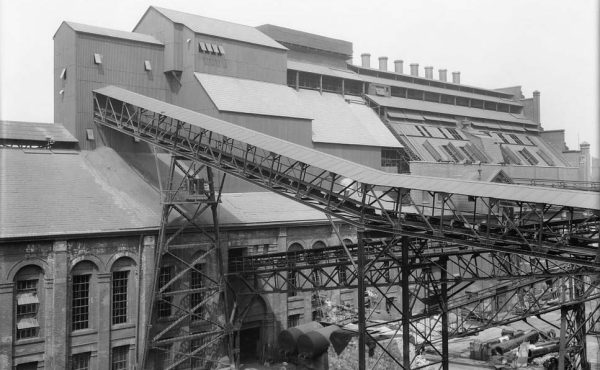We are constantly impressed by the labours of love the Toronto Transit Commission brings out of its fans, but we were totally blown away by this transit map created by Ian Stevens of the blog Crazed Monkey.
It really is a state of the art feature, combining the latest Ride Guide PDF with Google Maps and Sean Lerner’s TTC Subway Rider’s Efficiency Guide. You can enter in your address and immediately be taken to that spot in Toronto for a quick, at a glance look at the routes near that location. Click on any subway station on the map, and you’ll be given the option to visit the corresponding station page at the Subway Rider Efficiency Guide website. And that’s just for starters.
Seeing what Ian Stevens can do brings to mind other things that the TTC should do to help its riders navigate the system. It’s not too much of a stretch to imagine using Goggle Maps pathfinder feature, taking two locations within Toronto and finding the quickest route between them. If riders can ask the system, “I want to get to Albion Road and Humberline by 11 a.m. from College and Universityâ€, they’ll be impressed, even if they are warned to leave themselves several minutes of leeway to make up for service delays.
Congratulations Ian on doing such a good job.




19 comments
As a small first step, the City should definitely add Ian’s Innovation to their own map at http://map.toronto.ca/imapit/iMapIt.jsp?app=TOMaps. It’s a decent map, but it totally sucks when it comes to mapping TTC information, rendering the map FAR less useful than it could be.
I’d be very happy if someone would encourage the city to let Ian contribute his expertise to their little map.
I agree – this is a fabulous resource. Can you imagine if the commission took as much of an interest in promoting itself as its enthusiasts do? What a team an engaged TTC and enthusiastic riders could make.
Seems as though the TTC is catching on…although they may copy that Mississauga system instead for now.
See the article below.
http://tinyurl.com/y6zxjo
Someone in Adam Giambrone’s office told me that the TTC has been working with Google Transit to get included with that service. Hopefully that’ll be up soon. (It includes the much coveted feature of routing.) Plus, it’s totally free to the TTC.
I have written to Adam Giambrone, the new TTC chair, to hire Ian Stevens immediately! Maybe he would also help to revamp their atrocious site and integrate his effort with Google Transit’s route planner.
I tried out the Mississauga trip planner described in the Star Article at http://tinyurl.com/y6zxjo but it was not working for me. Admittedly Google Transit is not perfect either but to have the Ian’s route maps overlaid on the Google transit planner would be awesome.
Wow. I don’t know much about metadata standards in this area, but two perhaps-naive thoughts:
1. Transit agencies — the GTAA should be pushing them to do this — should be facilitating this by publishing their information in a common data standard that third-party interfaces, like Google, can use for presentation.
If each agency builds their own closed system that integrates the data tightly with the front end, such that only that agency is in a position to innovate with regard to the front end, then we aren’t much further ahead.
So the important thing is that this be undertaken in a way that unleashes innovation on the front-end interfaces by third-party enthusiasts — including their own in-house people, but not limited to them.
2. To do this, I guess they would need some common format that published online, to the world, in real time:
– fixed lat-long coordinates for static objects (subway stations, bus stops, streetcar stops), their qualities (what kind of stop), their status as part of a network of stops (a bus route, the Y-U-S line), etc.
– variable coordinates for each vehicle equipped with MT/Viva-like GPS data. If the data is being transmitted back to a central system, why not make that published to the world (I mean, the Internet), too, so that third-party applications could get going.
Imagine, for instance, a developer who designed a way to easily invoke real-time SMS alerting of when your bus was within 500m of the stop, and then to easily turn alerting off once you’d arrived at the stop? With Internet publication of GPS vehicular data, developers would gain the ability to do this.
Public data, Adam Giambrone! Much more than TTC-designed interfaces, the data is what we need.
I’m about to go have a drink and will hoist one for Ian when I do.
Disparishun> Very good. Very very good. I’d like to be able to program my personal (insert device of choice here) to send me a text when the streetcar or bus is 5 minutes away. Then i could leave home, walk to the stop, and it would be there, barring any obstacles in that 5 minute period.
Yeah, free up the data, and let developers and open source people go crazy. I wonder if the TTC would get down on that.
“Yeah, free up the data, and let developers and open source people go crazy. I wonder if the TTC would get down on that.”
– I love the idea – but wouldn’t somebody somewhere nix something like this citing the all-too-common “security” or “terrorism” excuse? (I think that was the reasoning behind the bone-headed decision to remove all the garbage bins and replace them with the few useless bags, resulting in much dirtier stations as of late).
I’ll certainly look forward to when we can look up vehicle location online and via cell phone, especially for when leaving work… I’m in industrial parkland where the route runs (in theory) every 15 minutes but it’s so unpredictable that no matter when you get to the stop, whether you go by the schedule or not, you’re likely to wait 10 minutes or more. AVL technology would counteract that – at a minimum you’d know whether the bus was just a minute or two away, or whether you were better off walking to a farther away frequent route.
But if the TTC wants to take a leap forward in helping riders plan trips on unfamiliar routes, here’s a low-tech, low-cost solution that can happen tomorrow, if they wanted: actually publish TIMETABLES that show roughly how long a trip is supposed to take, not just when the bus is supposed to arrive at your stop. You know, like 95% of transit agencies do…
It’s been said many, many times before, but it bears repeating:
“Attention TTC: 1997 called, and it wants its website back.”
Sean — good point, I think they would. But that could only nix it if there was so little support that it was allowed to nix it. A good response would be simply, sure, noone wants security threats, but this is not all or nothing — so let’s have people who know about this stuff figure out exactly how much data we can release, and what we can’t. So that can become an implementation issue, once the issue is there.
By the way: .
Oops. Let me try that again: link to Google Transit Data Feed page.
I wish the TTC would just cooperate with the Google engineers who run Google Transit. It lets you enter in two addresses for a city, and it will give you the best possible public transportation route, including bus stop overs and approximately how long it will take depending on time of day.
Jacob,
1997 wont be around much longer. In October-November, the TTC issued a tender for a website redesign:
http://www2.ttc.ca/gsop&s/P01DR06363.HTM
6 proposals were submitted and the tender will be awarded on December 28th, 2006 (according to the TTC procurement website).
Jay
As an aside, I wonder how long it’ll be before Ian gets a “cease and desist”, given that he’s violating not one, but TWO copyrights (one for the Transit Routes, and one for the Transit Graphics)!! (Horrors!!)
I think Dublin’s DART system provides an open data feed for sites like this:
http://dartmaps.mackers.com/
Doesn’t include the tram and bus systems, unfortunately.
I read somewhere (don’t recall) that the TTC is having trouble providing the data in the format that Google wants. You can see it here http://code.google.com/transit/spec/transit_feed_specification.htm. A quick look shows that the longitude and latitude of every stop is needed. I would be surpised if the TTC has this. Although I bet one could start with the major intersections and that data could come from Google Earth.
Speaking of which, I have recently updated a .kml file with the TTC subway lines and GO transit rail lines. http://bbs.keyhole.com/ubb/showflat.php?Cat=0&Board=EarthTransportation&Number=96590&PHPSESSID=&fpart=1
Soooo… I’m apparently a bit out of the loop with this posting, seeing as the last one was a year and a half ago… But it definitely doesn’t seem that the TTC website has had any major improvements yet…
The map made by Ian Stevens is definitely a good start. And yes, something the TTC should be doing themselves. I’m a Torontonian, but have lived in Scandinavia (both in Oslo, Norway and in Lund, Sweden) for a few years now. Here the public transportation sites are amazingly user-friendly. They’re integrated between different municipalities and different transit systems (imagine the TTC, GOtransit and Greyhound all cooperating). AND, I just found out the other day that on the sites covering both Denmark and southern Sweden, you can search for directions from a specific address in one country to a specific address in another country. It gives you times, directions, and even maps for where to walk between connections! Amazing!
Check out these sites: (in all cases you can click on the Union Jack to get it in English)
http://www.trafikanten.no/
http://www.rejseplanen.dk/
http://www.skanetrafiken.se
Enjoy 🙂